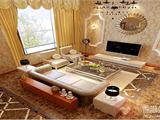Analysis of CNC Machining Technology Process
Analysis of CNC Machining Technology Process for Confidential Components
The analysis of CNC machining technology process for confidential components is the most important and complex part in the compilation of numerical control programs. It also represents the core work in designing the CNC machining technology process plan, which must be completed before formulating the CNC machining technology scheme. A qualified programmer should have a clear and comprehensive understanding of the functions and characteristics of CNC machines and their control systems, as well as every factor that influences CNC machining technology. This ensures the avoidance of potential product quality issues due to insufficient consideration of the process scheme, thus preventing unnecessary waste of resources such as manpower and materials. Comprehensive and reasonable analysis of CNC machining technology processes is an essential guarantee for improving the quality of numerical control programming.
In CNC machining technology, from the design drawings of precision components to the final delivery of qualified finished products, not only must the compilation of numerical control programs be considered, but also factors such as the arrangement of processing routes for precision components, selection of machining equipment, choice of cutting tools, positioning and clamping during the machining of precision components, etc. Before starting programming, a detailed CNC machining process analysis of the design drawings and technical requirements of the precision component must be conducted to ultimately determine which aspects are the technical keys of the precision component, which aspects are the difficulties of CNC machining technology, and the ease or difficulty of compiling the numerical control program.
The processability analysis of precision components is also the first step in numerical control planning. Based on this, one can determine the required CNC machine tools, processing tools, process equipment, cutting parameters, and CNC machining process routes for the CNC machining technology of precision components, thereby obtaining the optimal processing process plan and ultimately meeting the requirements of the engineering drawings and relevant technical documents for the precision components.
CNC Machining Technology Process Flowchart
1. Original data required for formulating CNC machining technology process routes:
(1) Design drawings, technical data, and assembly drawings of precision components.
(2) Production batch size of precision components.
(3) Relevant technical standards required for CNC machining technology of precision components, such as enterprise standards and process documents.
(4) Quality standards for product acceptance.
(5) Current production conditions and information. Manufacturing capabilities of process equipment and special-purpose equipment, specifications and performance of machining equipment and process equipment, and workers' technical skills.
2. Analysis of blank state
Most precision component design drawings define only the shape and size during machining, without specifying data about the original blank material, including type, specification, shape, heat treatment status, and hardness. During programming, gaining a deep understanding of the blank material is an important start. Using this original information facilitates numerical control program planning.
(1) Analysis of product assembly drawings and precision component drawings
Analyzing and studying assembly drawings mainly involves familiarizing oneself with the product's performance, purpose, and working conditions, clarifying the mutual assembly positions and roles of precision components within the product, understanding the basis for various technical conditions specified on the precision component drawings, and identifying the main technical key issues to lay the foundation for formulating a correct processing plan. Of course, when conducting process analysis for ordinary precision components, assembly drawing analysis may not be necessary.
(2) Processability analysis of precision component drawings
Analyzing and studying precision component drawings primarily involves reviewing the manufacturability of the precision component, such as checking for errors or omissions in the views, dimensions, and technical requirements on the design drawings, especially for precision components with poor structural manufacturability. If possible, communication or modification suggestions should be made to the design personnel, who will decide whether necessary modifications and improvements are needed.
① Completeness and correctness analysis of precision component drawings
The views of the precision component should comply with national standards, be accurately positioned, and clearly expressed; the relationships between geometric elements (points, lines, surfaces) (such as tangency, intersection, parallelism) should be precise; dimension annotations should be complete and clear.
② Technical requirement analysis of precision components
Technical requirements for precision components mainly include dimensional accuracy, shape accuracy, positional accuracy, surface roughness, and heat treatment requirements, among others. These technical requirements should represent the limit values under the premise of ensuring the use performance of the precision component. Conducting technical requirement analysis primarily involves assessing the reasonableness and feasibility of these requirements, focusing on analyzing the machining accuracy and technical requirements of important surfaces and areas to prepare for formulating a reasonable processing plan. Simultaneously, through analysis, determine if the technical requirements are overly stringent because excessively high precision and overly small surface roughness requirements can complicate the manufacturing process, increase processing difficulty, and add unnecessary costs.
③ Dimension annotation method analysis
The dimension annotation methods for precision component drawings include local dispersed annotation, centralized annotation, and coordinate annotation, among others. For precision components processed on CNC machines, dimensions on the precision component drawing should, under the premise of ensuring usability, adopt centralized annotation or unified benchmark annotation (i.e., coordinate dimensions) as much as possible. This not only facilitates the compilation of numerical control programs but also helps unify the design benchmarks, process benchmarks, and programming origins, especially for large-scale CNC machining.
④ Material analysis of precision components
Under the premise of satisfying the functional requirements of precision components, cost-effective materials should be selected. When choosing materials, domestic options should be prioritized, avoiding easily selecting expensive or scarce materials.
⑤ Structural manufacturability analysis of precision components
The structural manufacturability of precision components refers to the feasibility and economy of manufacturing while meeting the required performance. Good structural manufacturability makes precision component processing easier, saving costs and materials, whereas poor structural manufacturability leads to difficult processing, increased costs, wasted materials, and even inability to perform CNC machining. Through the analysis of structural features, precision requirements, and complexity of precision components, the required machining methods and types and specifications of CNC machines can be determined.
Dongguan Wanjun Large-Scale CNC Machining Center (http://www.dgwanjun.com) specializes in providing large-scale CNC machining, large-scale computer milling machining, large-scale aluminum plate machining, large-scale precision parts machining, machinery panel machining, and large-scale mold machining.
This is the new article 1.html, please modify and add the main content accordingly.



